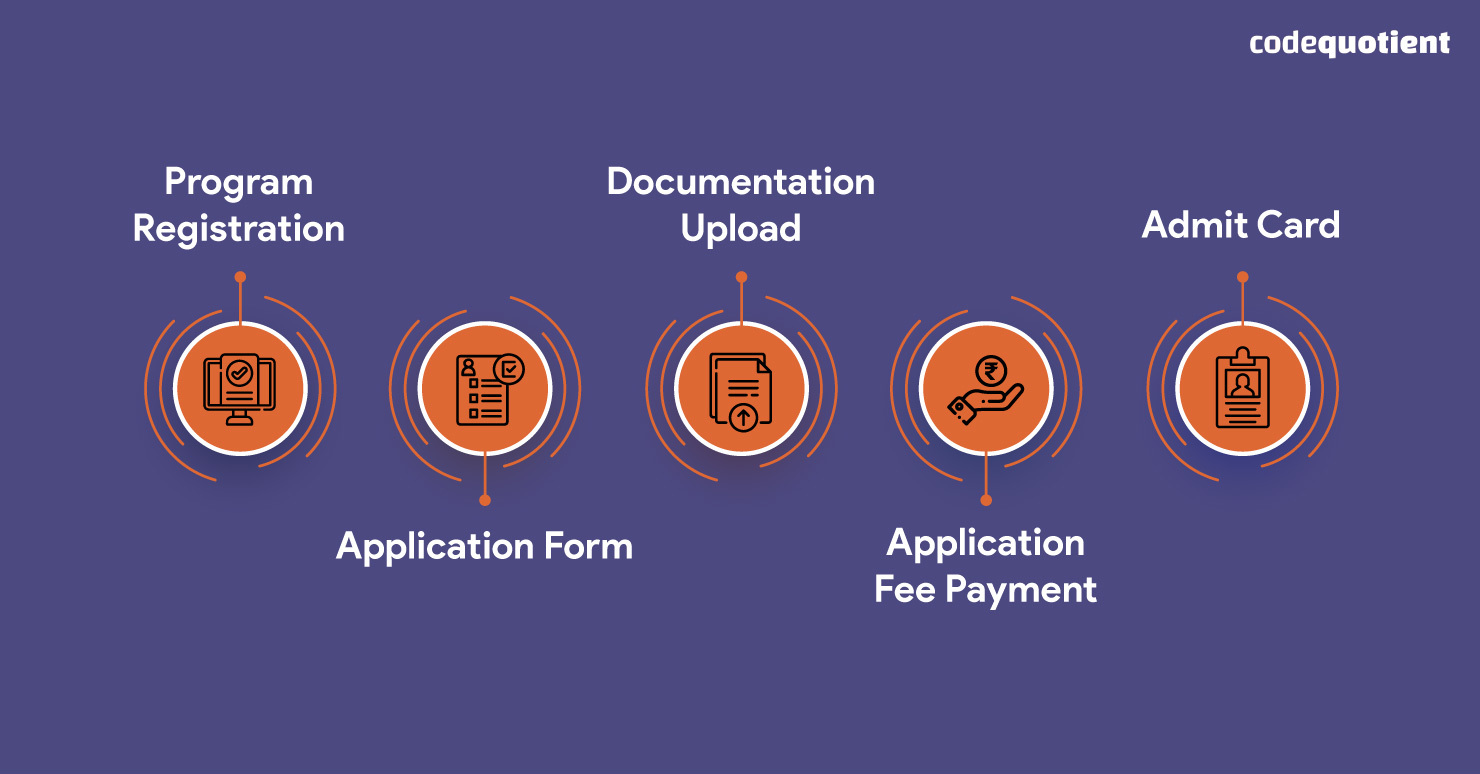The NIT MCA course is a three-year engineering degree offered by the National Institute of Technology in India. It aims to provide practical and theoretical knowledge to learners so they can get a good grounding in the field.
The number of applicants for this course has recently increased, which could be attributed to current digital trends. This article will give you an in-depth guide to the NIT MCA program.
Entrance Examination for NIT MCA Course
Passing an entrance exam known as NIMCET (National Institute of Technology Common Entrance Test) is mandatory for learners seeking admission to NIT MCA. Every year, one of the eleven participating NITs conducts the NIMCET for MCA admission to a total of approximately 800 learners.
NIMCET is a computer-based test with 120 questions and a maximum score of 480. Usually, the syllabus for the entrance test includes mathematics (50 questions), analytical ability and logical reasoning (20 questions), computer awareness (10 questions), and General English (20 questions).
Each correct answer will fetch 4 marks to the candidate, whereas each negative answer will amount to a negative 1 mark. Different universities have different cut-offs, which you can learn from the official website.
Based on the candidates’ performance on the NIT MCA course entrance examination, learners secure admission to different colleges (NIT) across India through a counselling process.
What Are NIT MCA Eligibility Criteria?
Those who aspire to enrol in an NIT MCA course must meet the following requirements, which also serve as the NIMCET eligibility criteria:
- Learners applying for the MCA NIT can be Indian citizens or non-resident Indians.
- Applicants must have studied Mathematics or Statistics (or an equivalent relevant topic) at the qualifying level for at least a semester/year and hold a BIT/BCA/B.Sc/B.Sc (Hons) from a recognised University.
- Candidates for the NIT Master of Computer Application Admissions Test (NIMCET) must hold a Bachelor of Engineering or Bachelor of Technology from an accredited institution.
- The applicant must have at least 60% or 6.5 CGPA on their qualifying exam (for Gen/OBC) or 55% or 6.0 CGPA (for SC/ST)
What Is the Application Process for the NIT MCA Course?

The application for admission to the Master of Computer Application program at the NIT is available annually. The institute modifies the eligibility requirements before issuing the NIMCET Online Application, and only those candidates whose application requests satisfy the updated criteria will have their requests processed.
The admissions procedure for the NIT Master of Computer Application program consists of four stages:
Step 1: Program Registration
You can register for NIMCET online by going to the official website, answering few simple security questions, and providing your Email and phone number. After registering, you will receive a password-setting link via Email.
Step 2: Application Form
Enter the credentials into the NIMCET application portal. Fill in your details—name, date of birth, parents’ names, and academic information (test scores, GPAs, etc.). Applicants must also specify their preferred exam centres during this stage.
Step 3: Documentation Upload
In order to be considered valid, the following phase entails uploading all necessary papers, including mark sheets, proof of identity, proof of date of birth (SSLC/ 10th Marks Card), and category/caste/PwD certificate (if applicable), in the required format.
Step 4: Application Fee Payment
Finally, you will need to pay the NIMCET application fee online. The fee can be paid via credit/debit card, net banking, or any other accepted mode of payment.
The cost of applying to the Master of Computer Application program at NIT is INR 2,500 for those in the General category and Other Backward Classes and INR 1,250 for those in the Scheduled Castes, Scheduled Tribes and persons with disabilities (PwD).
The NIMCET application fee is non-refundable and must be paid using one of the accepted online payment methods. Candidates must submit a completed application form by the deadline to be considered for the entrance examination.
Step 5: Admit Card
All enrolled candidates can download the NIMCET admit card on the official website. To access the admit card download page, you must enter your email address and password into the portal.
You are responsible for verifying that your personal information appears correct on your admit card and reporting any discrepancies to the appropriate authorities. Moreover, you are also required to bring the admit passes to the examination hall.
NIT MCA Course Admissions
The NIMCET result will be announced online. The result will include each candidate’s final score and their final ranking.
Qualified NIMCET applicants will be invited to the counselling sessions. Candidates’ test scores will determine their placement in the NIMCET counselling. Last but not least, NIMCET seat allocation is determined based on merit, preferred option, and available seats.
Interested in Enrolling in an NIT MCA Program?
The National Institute of Technology (NIT) is among the top-ranking institutions in India. NIMCET is a prerequisite for admission to the NIT MCA course. Aspiring learners often put in a lot of effort to crack the exam.
Are you unsure about your preparation and have about 3 to 6 months before the exam? Do not worry!
CodeQuotient’s Software Engineering Bootcamp can help you prepare for the fundamentals. So, don’t wait any longer—apply now!




